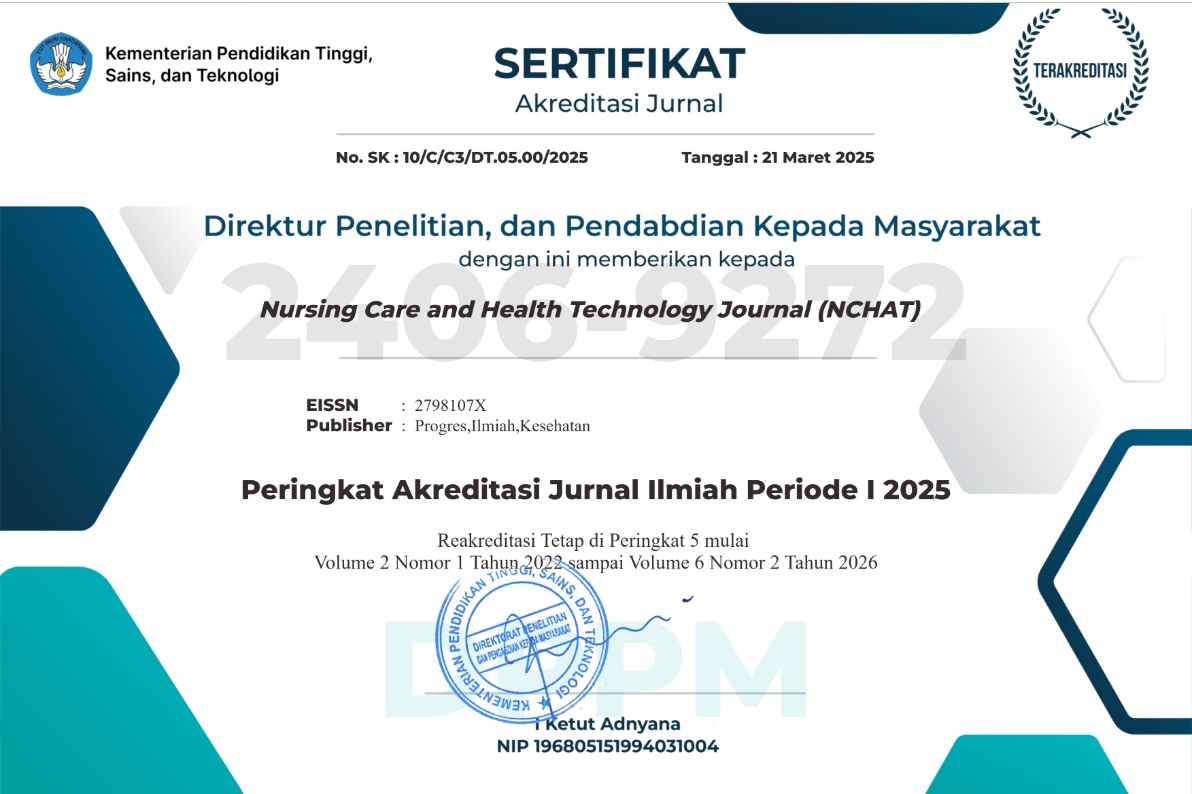
Peer Review Process
Peer review follows a number of stages, including:
Step 1: Submission of Paper
The corresponding author submits the paper to the journal. Before the submission of manuscript, the corresponding author needs to register at the NCHAT website http://ojs.nchat.id/index.php/nchat. After registration, the online registration system emails a username and password to the corresponding author through which he/she can log into the Online Submission at the journal website to submit manuscript.
Step 2: Editorial Office Assessment
The journal checks the paper’s composition and arrangement against the journal’s Author Guidelines to make sure it includes the required sections and stylizations. The quality of the paper is not assessed at this point.
Step3: Appraisal by the Editor-in-Chief (EIC)
The EIC checks that the paper is appropriate for the journal, asking questions such as:
- Has the author followed the journal’s guidelines?
- Is this the right journal for this article?
- Will the journal’s readers find it interesting and useful?
The editor might reject the article immediately, but otherwise it will move to the next stage, and into peer review.
Step4: First round of peer review
The editor will find and contact three or four other researchers or academics who are experts in your field. They will be asked to read your article, and advise the editor whether to publish your paper in that journal. So what are they looking for? This depends on the subject area, but they will be checking:
- your work is original or new;
- your study design and methodology are appropriate and described so that others could replicate what you’ve done;
- you’ve presented your results clearly and appropriately;
- your conclusions are reliable and significant;
- the work is of a high enough standard to be published in the journal.
You’ll then be given feedback about your article, telling you if any changes need to be made before it can be published. Please note the final editorial decision on a paper and the choice of who to invite to review is always at the editor’s discretion.
Step 5: Revise and resubmit
You can then amend your article based on the reviewers’ comments, resubmitting it with any or all changes made. If you decide you don’t want to accept all the reviewers’ comments, you can include a brief explanation of why you don’t believe they are applicable with your resubmitted article. The editor can then make an assessment, and include your explanation when the amended article is sent back to the reviewers.
Step 6: Final decision
If accepted, the paper is sent to production. If the article is rejected or sent back for either major or minor revision, the handling editor should include constructive comments from the reviewers to help the author improve the article. If the paper was sent back for revision, the reviewers should expect to receive a new version, unless they have opted out of further participation. However, where only minor changes were requested this follow-up review might be done by the handling editor.









